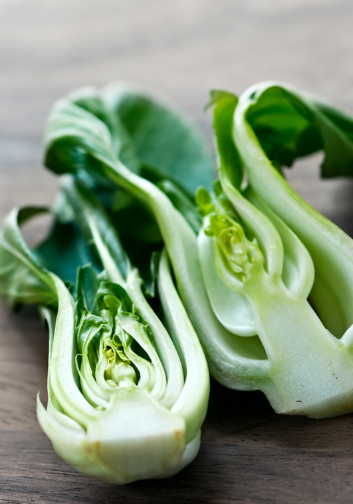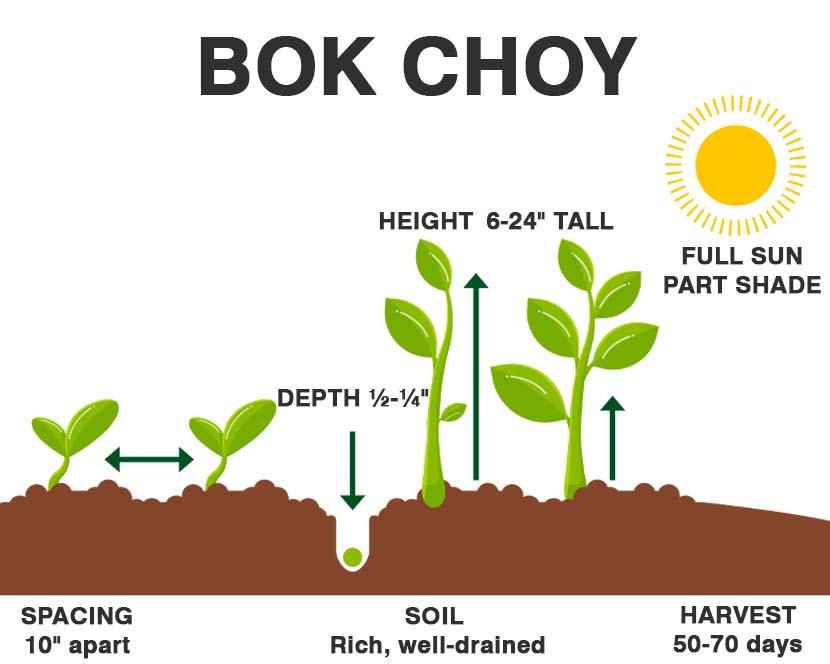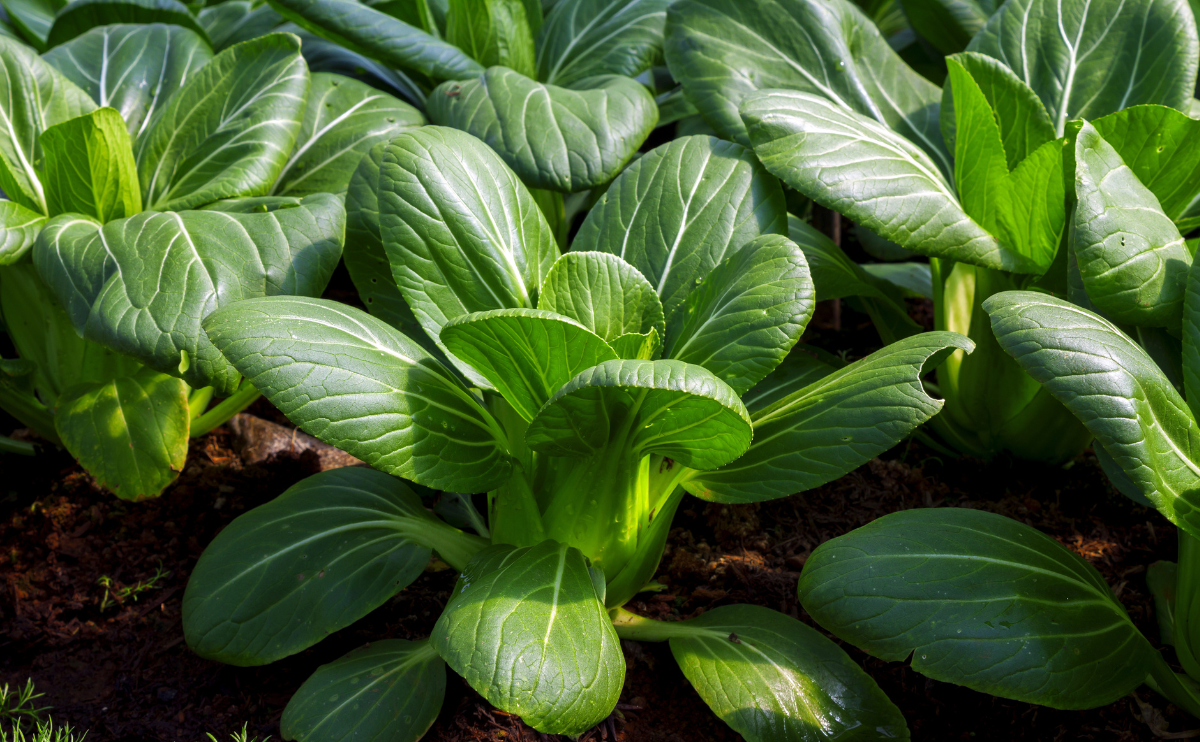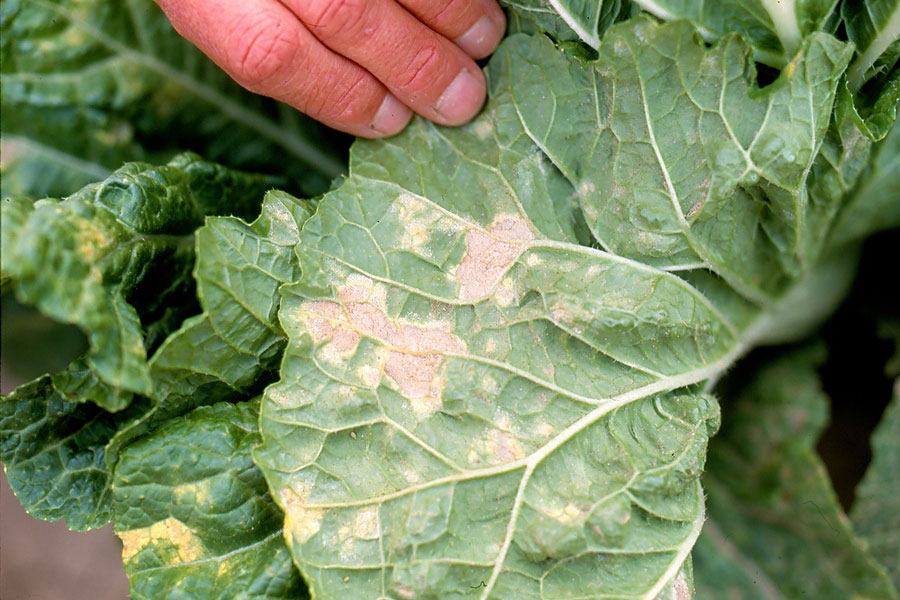Bok choy, also known as Chinese cabbage, is a cool-season biennial vegetable that is normally harvested for consumption in its first year of growth. It has crisp stalks surrounded by smooth, tender leaves with a flavor that is somewhere between cabbage and chard. Plants form an upright head, with outward flaring leaves, and their white or green stalks look like smooth, non-stringy celery. Flower stalks grow from the center of the plant and have the yellow, four-petal cross typical of the cruciferous family.
Whether growing from seeds or nursery seedlings, this vegetable is fast-growing and planted in early spring for a spring-to-early-summer harvest, or in late summer and early fall for a mid- to late-fall harvest.

| Common Name | Bok choy, Chinese cabbage, bok choi, pac choy, pac choi |
| Botanical Name | Brassica rapa var. chinensis |
| Family | Chinese brassicas |
| Plant Type | Biennial vegetable (usually grown as annual) |
| Size | 6-24 in tall.; 6- to 18-in. spread |
| Sun Exposure | Full sun, part shade |
| Soil Type | Rich, well-drained |
| Soil pH | 6.5 to 7.0 (slightly acid to neutral) |
| Bloom Time | Summer |
| Hardiness Zones | 2-11 (USDA) |
| Native Area | China |

When to Plant?
This will be determined by your planting zone. There is a final frost date for each area. As a result, you can plan your gardening activities around this date. Check our Frost Dates Across North America: First & Last Frost Dates Chart. However, the date will not be the same for every plant.
How to Plant
Bok choy is a fairly fast-growing vegetable that is usually planted from seeds, either directly into the garden immediately after danger of frost has passed, or indoors about four weeks before the last frost. You can also buy nursery seedlings to plant in the garden after the danger of frost has passed.
It can take some practice to learn when bok choy should be planted in order to avoid setting seed in its first season. This vegetable will bolt (send up flower stalks) if the weather is too warm, but paradoxically it can also bolt if exposed to temperatures below 50 degrees when it is young. In areas with cool springs that quickly shift to warm temps, it may be best to start seeds indoors then transplant the seedlings outdoors when all danger of frost has passed. You may have better luck avoiding bolting if you plant bok choy in the late summer and early fall when temperatures are fairly steady.

The planting site must have well-draining rich, fertile soil where rain can saturate the ground. The site should have full sun for most of the day, especially if it’s a fall crop. A spring crop, which is trickier due to the plant’s tendency to bolt because of temperature changes, should have three to five hours of full sun and partial shade, especially in the afternoon. Container growth is also possible for a small garden of bok choy.
Seeds should be planted 1/2 inch apart about 1/4 inch deep. If planting seedlings, space them in the ground 6 to 12 inches apart for adequate growth. When growing multiple rows of bok choy, space the rows about 18 inches to 30 inches apart for best growth. If you are growing more than one row of bok choy, make sure your rows are 18 to 30 inches apart. If you would like a continuous harvest of bok choy, add in new plants every two weeks. No support system is necessary for bok choy.
If sowing directly into the garden, begin planting a week before your last frost date. Seeds are quick to germinate, usually within four to eight days. You can also start seed indoors about four to five weeks before your last frost date.
If you’ve started the seeds indoors, make sure to harden them off before planting. Hold off transplanting them until nighttime temperatures remain above 50 degrees, or be prepared to cover them with garden cloth. If the seedlings are exposed to frost or prolonged cold temperatures, they will think they’ve been through a winter and start to bolt.
Plant seeds 1/2 inch deep, spaced 1 inch apart. Thin and eat the plants when they are a couple of inches tall. If you are growing full-sized plants, thin to at least a 6-inch spacing.
How to Cultivate
Light
Bok choy grows best in full sun, but it tolerates part shade, especially necessary in the summer months. It typically needs about six hours of direct sun each day.
Soil
You’ll need well-draining soil enriched with organic matter. Bok choy will grow in a soil pH from 6.0 to 7.5, although something in the 6.5 to 7.0 range is best. Water
Bok choy needs fairly moist but never soggy soil conditions. Drought can cause it to bolt to seed too early. Your plants will need consistent watering, especially in the drier fall months. The best rule of thumb is to give bok choy 1 inch of water a week so the soil remains moist between waterings.
Temperature and Humidity
Bok choy grows as an annual in every hardiness zone in the U.S. It does best in cooler weather; Dry and hot conditions can cause bok choy to bolt prematurely. This vegetable is not as winter hardy as smaller leaved Asian greens, but it may be winter-hardy under cover in USDA Hardiness Zones 4 to 7 when there are mild winters. However, it may quickly bolt to seed the following spring.
Fertilizer
Add compost and organic fertilizer to the soil when planting bok choy. These plants are heavy feeders, preferring soil that is rich in potassium, nitrogen, and phosphorus. But organic feeding should be done at the time of planting. Chemical fertilizers should not be used during its growth period.
How to Harvest
Depending on the variety and the weather, bok choy should be ready to harvest in 45 to 60 days after seed germination. Harvest leaves from the outer part of the plant to allow the inner leaves to continue growing.
When you’ve harvested what seems like all the leaves from plants, slice the plants off about 1 inch above the ground and they should re-sprout for you, or you can propagate in water. The re-sprouted plants will be smaller, but still delicious. The young, tender seedlings culled out during thinning can be added to salads or added to stir-fry dishes.
Hydroponics
Germination: Start by germinating your Bok choy seeds. You can do this by placing them in a moist paper towel or using a seed starting tray. Once the seeds have sprouted, transfer them to your hydroponic system.
pH range: Bok choy prefers a slightly acidic pH range between 6.0-6.5. You can use a pH meter or test kit to monitor and adjust the pH level of your hydroponic solution.
EC: The recommended electrical conductivity (EC) for Bok choy is between 1.4-2.0 mS/cm. This measures the total dissolved salts in the hydroponic solution, so it’s important to monitor it regularly and adjust as needed.
PPM: The recommended parts per million (PPM) for Bok Choy is between 980-1400. This measures the concentration of nutrients in the hydroponic solution, so it’s important to monitor it regularly and adjust as needed.
Humidity: Bok choy prefers a humidity level between 50-70%. Use a hygrometer to monitor and adjust the humidity level in your growing area as needed.
Light hours: Bok choy requires at least 12-14 hours of direct sunlight or artificial light per day. If you’re growing them indoors, you can use grow lights to provide the necessary light.
Temperature air: The optimal temperature range for Bok choy is between 60-70°F (15-21°C). It’s important to maintain a consistent temperature in your growing area to ensure healthy growth.
Temperature water: The water temperature should be kept between 65-75°F (18-24°C) to promote healthy root growth and nutrient uptake.
With these guidelines, you should be able to successfully grow Bok choy hydroponically. Good luck!



